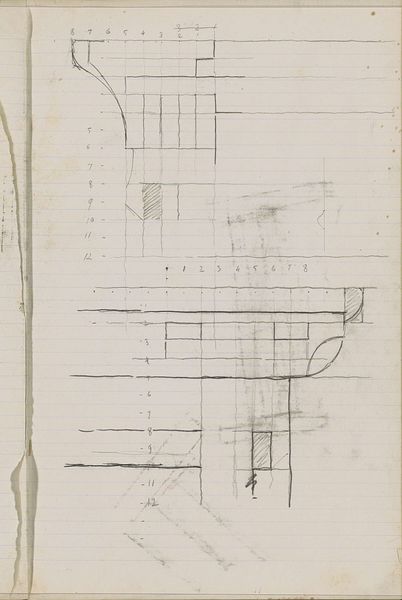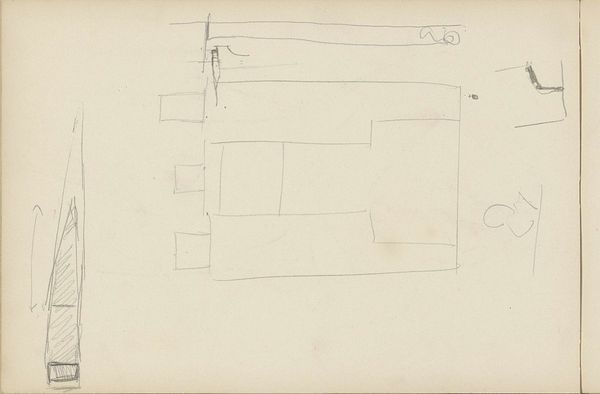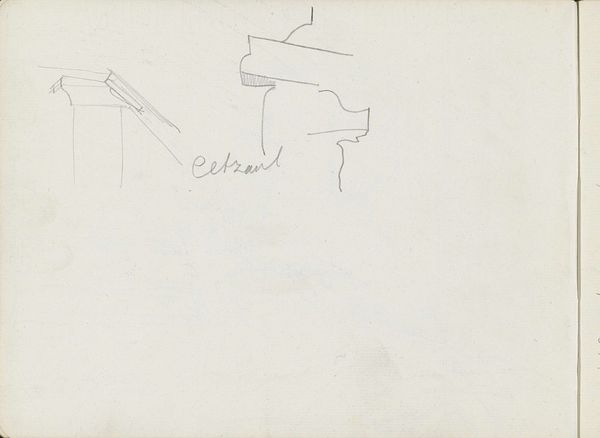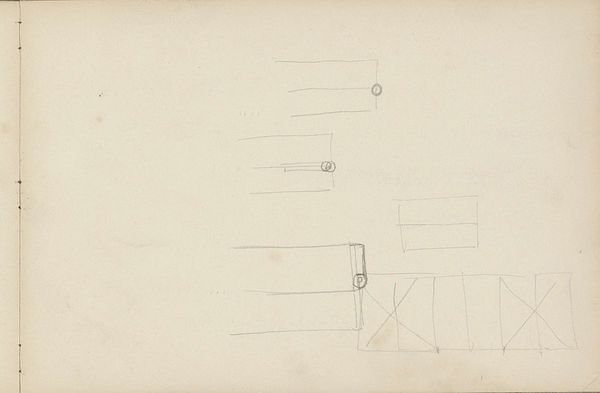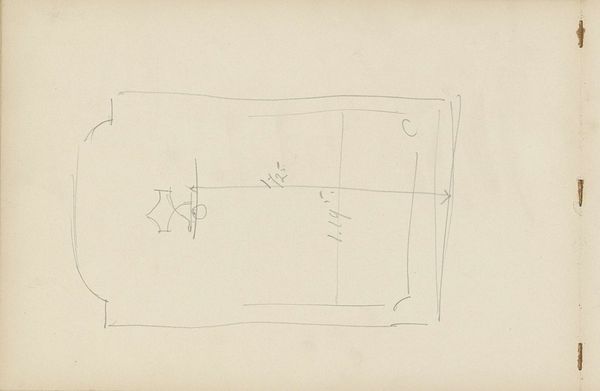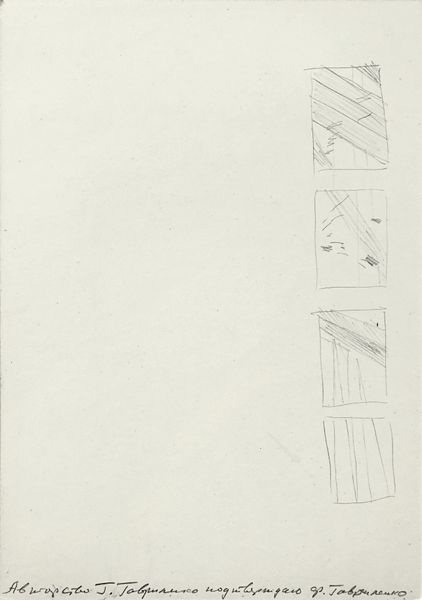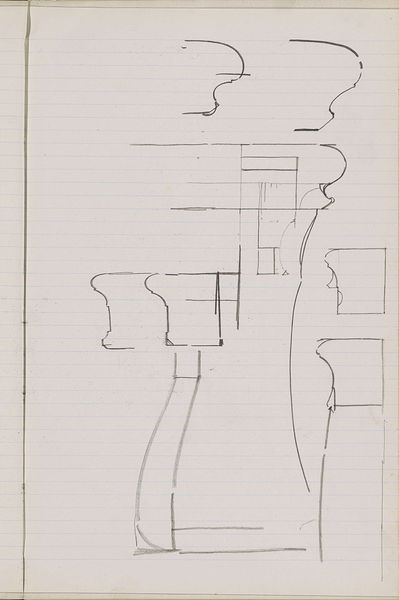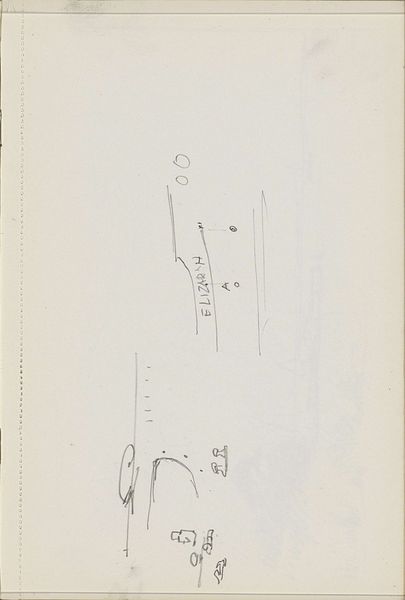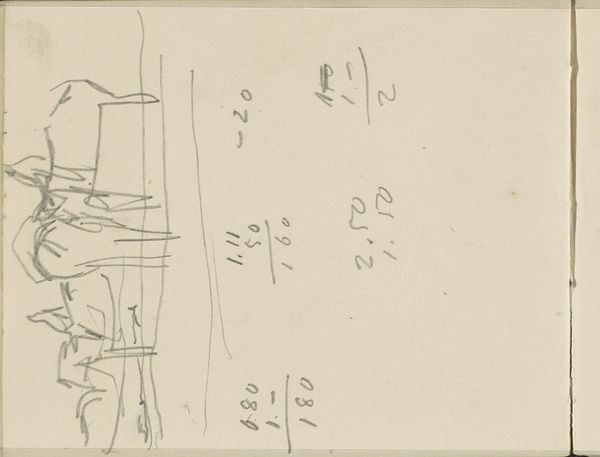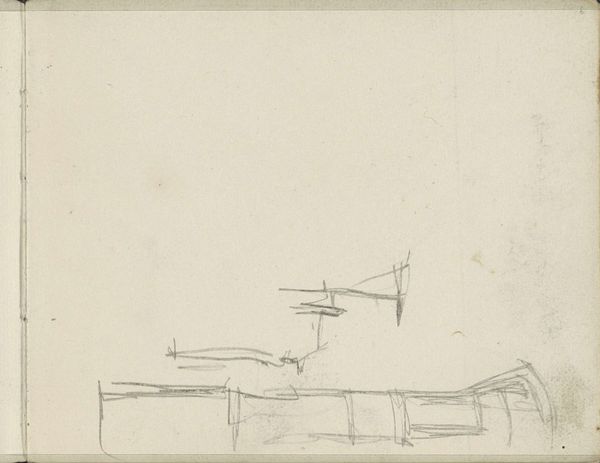
drawing, paper, pencil
#
drawing
#
aged paper
#
hand written
#
sketched
#
old engraving style
#
hand drawn type
#
paper
#
personal sketchbook
#
idea generation sketch
#
fading type
#
geometric
#
pencil
#
abstraction
#
sketchbook drawing
#
initial sketch
Copyright: Rijks Museum: Open Domain
Editor: This intriguing sketch, titled "Raster en twee letters 'E'", by Carel Adolph Lion Cachet, from around 1930, uses pencil on paper. It feels like a peek into the artist's thought process – almost architectural with the grid and letterforms. How do you see this piece? Curator: I see the physical making of the drawing as central. Look at the aged paper and the very directness of the pencil lines. It emphasizes the manual labor involved. The "E"s and the grid become less about symbolic meaning, and more about the act of production, about sketching ideas, initial conceptualisation, idea generation; consider it a space to explore form. Editor: So, you’re less interested in what the 'E' might represent and more focused on Cachet's hand and process? The grid looks so regimented at the bottom of the sketchbook, almost as if it represents a mould. Curator: Exactly. Consider the social context – the rise of mass production in the early 20th century. Artists were grappling with their roles in a world increasingly dominated by machines. I think that we are seeing those questions manifest on the sketchbook page itself; note how ‘cleanly’ it is sketched, there is a sense of purpose, however nascent. Is it a critique or engagement of rationalization of production through such methods? Editor: That makes me see the "E"s differently. Almost as prototypes, the same way Henry Ford had a vision for standardizing the creation of an automobile. Thank you, that’s insightful. I was so focused on the aesthetic and didn't connect it to broader social and historical making. Curator: The material conditions of art-making are never truly separate from those broader currents. Considering that production, as much as the image, helps reveal deeper meanings, I find. Hopefully that resonates for you as well. Editor: Absolutely. I will definitely consider the means of production when I approach similar artworks from now on!
Comments
No comments
Be the first to comment and join the conversation on the ultimate creative platform.
